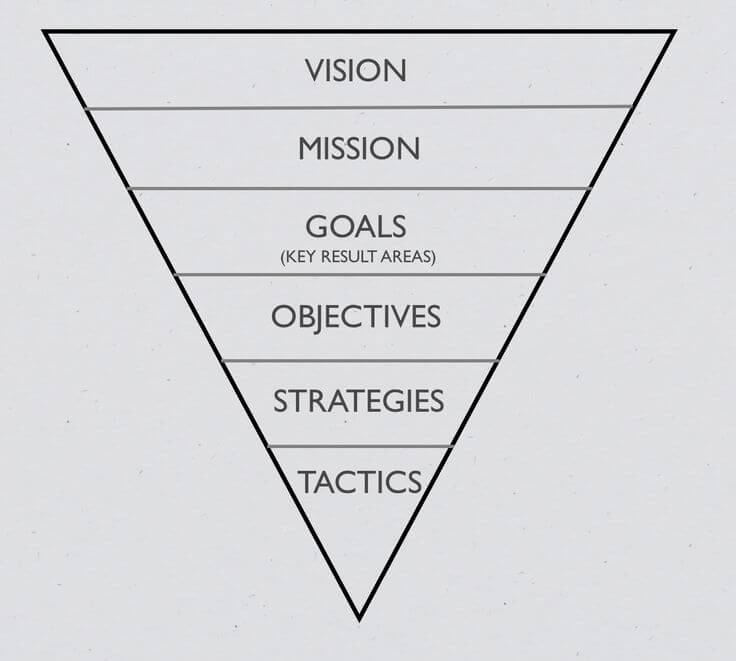
5 Steps to Crafting a Customer Service Strategy to Meet Your Call Center Performance Goals
It seems we’re flying through 2021 as fast as we closed out 2020, so let’s do a quick check-in.
Who set resolutions for themselves this year? Okay, now who kept the promises you made to yourself? And who’s resting on their laurels, waiting for a little nudge?
Here in Indianapolis, it’s rather cold this time of year. And for some reason, brisk air and gray skies seem like the perfect excuse not to act on those new resolutions. I mean… how can I take a walk outside every day when I wake up and it’s 17 degrees? Nope.
You see, it’s excuses like this that give resolutions get a bad rep. People throw out blanket statements about how they want to work harder, get healthy, or read more. Then, come the end of January, and these ideals already get tossed to the wayside. In fact, only 9% of people actually follow through with their New Year’s resolutions.
And, we know why. It’s not that the resolutions themselves are unobtainable. It’s that we don’t sit down and define the steps we need to take to reach our intended outcomes. We try to will our way into better habits.
But our improved outcomes will never happen if we don’t take actionable steps forward every day. And, the same concept applies to your contact center. That’s why we prefer to set measurable and attainable call center performance goals, instead.
You have to define your call center performance goals and desired customer outcomes before you can achieve them.
Once you have a roadmap for what you want to accomplish in your call center, you have to rally your team around those goals and outcomes. Then, work with your team to build an action plan to reach them together.
Companies labeled by McKinsey & Co as customer-centric rally around customer outcomes above all else. And, every customer experience outcome is measured, shared, and tied to individual performance along the way. These customer-first orgs take steps forward each day to improve their outcomes, tying everything they do back to the experience they deliver.
As you keep flying through 2021, we’re walking through an action plan to focus on your call center performance goals and take actionable steps to reach them. And, we’re giving you five steps to build a strategy that gets you there, day-by-day.
Step 1: Set your customer experience goals and objectives using the GOST model
Pinpoint broad, outcome-based goals specific to your company’s mission and vision.
Often, people confuse goals with objectives. They dive into the weeds and think through specific objectives, like improving CSAT by 20%, instead of starting with the basics, like leading your competitors on the ACSI index.
When you dig into the details, first, you put your outcomes at risk. You put all your budget and effort behind projects that might not help you reach your goals.
We live in a world where flexibility is important (after 2020, I think we all feel this more than we’d like to). And as the world shifts around you, it’s easy for your smaller objectives to shift, too. Setting objectives without overarching goals is like throwing darts at a moving target while blindfolded.
Setting high-level goals, first, gives you and your team stability and clarity. Even as things shift around you, your high-level goals remain constant, so you can live up to your company’s mission and vision.

To help set the right goals for better customer outcomes, use the GOST model. It un-muddies the waters between goals and objectives, so you can keep your call center team pointed in the right direction all year long.
Oyster.team mapped out the GOST model in terms of the what and the how.

Let’s say I own a dog-walking company in Indianapolis, and I’m planning my goals and strategies for 2021.
Using the GOST model, here’s what I map out for the coming year:
Goal:
Become the leading dog-walker in Indianapolis.
This goal is my high-level outcome. It’s what I ultimately want to achieve, not how I’m going to achieve it.
Objective:
Grow client-base and walk 40% more dogs by the end of 2021.
This is a specific and measurable outcome related to my goal.
Strategy:
Build a new website tailored to dog moms and dads who need help exercising their pups. And, as new clients pour in, hire more dog walkers to keep service levels high.
Here, I get into the how. This is the plan I will put in motion to become the leading dog walker in Indianapolis.
Tactics:
Run bi-monthly ad campaigns to find the dog moms and dads who need my services. Use customer testimonials to promote our superior service on our new website. Train all new employees to uphold our high standard of service.
These are a few of the specific actions I will take to reach my objectives and achieve my goals.
[Bonus Resource] We partnered with our friends at Hypercontext to create a library of example goals and objectives for customer service managers.
Step 2: Look at your year in review
What happened in your contact center in 2020? And, how did it compare to your year in 2019? Did you trend upward or lose momentum?
I know, after a year with as many twists and turns as 2020, looking at comparative data might feel useless. But many of the behaviors we adopted in 2020 are now cemented in our way of life. Companies plan to make remote work a permanent fixture, customers will continue to shop from their couches, and now, more than 82% of people feel comfortable using digital channels to reach out for help.
So while 2020’s data may seem extraneous, it actually points to new trends and helps you carve a strategic path forward.
Look to the KPIs you focused on last year to see how your contact center performed. Did your agents consistently meet First Call Resolution every month and top the charts in CSAT? Or, did you have high handle times, and a slew of other productivity problems to follow?
Use historical performance data to pair your most important metrics together and get a better picture of what your data means for your year in review. Create custom reports and dashboards for different views of what happened in your contact center, like how satisfied your customers were or what your agents’ holistic experience looked like.
And, as you plot your path forward, see what metrics you need to continue to improve for your customers and where you can shift your focus. Then, use agent Performance Tiles to give your agents a clear view of three metrics to focus on for the next 90 days.
Don’t let data alone dictate your strategy. But, use your numbers as a guide as you plot your objectives, strategies, and tactics for 2021.
[Learn More] Align your agents to your biggest goals with Sharpen Performance Tiles
Step 3: Create a contact center performance strategy
Use the data you harvested and analyzed in step two and turn it into business intelligence to fuel your 2021 performance strategy.
Band together with your supervisors, team leaders, and other managers to develop a performance action plan that fleshes out what you plan to measure in 2021, how to improve current KPIs, how to train your agents, and what type of culture to build together.
In your performance strategy, define your key objectives, like improving handle times by 5%. Then, decide which large projects you’ll carry out to reach each objective.
Will you live in the 70% of companies who plan to upgrade their digital technologies to deliver a better customer experience? Or, will you be among the majority group of contact center leaders who flagged improving customer self-service as their number one priority?
Whatever the case may be, map out how meeting your defined objectives syncs back up to each of your overarching contact center goals.
Your contact center performance strategy lays the foundation for each of the projects you take on in 2021. Plus, it gives purpose to that pernicious beast of a to-do list you oversee. As you map out your strategy, if you can’t connect each project and task back to one of your organizational goals, rethink them.
[Download Now] Build a data strategy to feed business intelligence and better call center performance.
Step 4: Identify your deadlines and tactics
Once you have your overarching goals and objectives IDed, it’s time to get tactical.
With a performance strategy in hand, dig into the details of each large project you chose. And, set deadlines to add some urgency to each of your projects. There’s nothing that sets a plan into motion better than a looming deadline (we like to call them lifelines instead.)
Think through how many projects you have moving at once and how long you’ll need to successfully accomplish each one. Are you working on a monthly, quarterly, six-month, or annual timeline? Set realistic expectations for each of your customer-focused projects, first. Then, map out the tactics and deadlines to get the ball rolling.
Here’s what a few sample tactics might look like for a larger project, like integrating your call center technology.
Tactic |
Deadline |
|---|---|
| Document the core systems you use in your contact center (like your contact center platform, ticketing system, and CRM). | February 30 |
| Meet with your IT team to get aligned on contact center technology needs | March 14 |
| Work with your vendors to see if integrations already exist to connect your platforms. | March 21 |
| Research new vendor partners if needed | April 21 |
| Bring options of new vendors to your ops and IT leaders | April 30 |
Step 5: Prioritize your work efforts to reach your call center performance goals
You don’t have superhuman powers (or 50 hours in the workday). That means, to accomplish your call center performance goals, you need to assign priority to each of the projects and routines you plan to complete.
Go through your list of projects and rank their importance. Which ones will move you closer to your contact center and company goals? Which ones are must-haves and which are nice-to-haves? Look at your list of tactics and decide what projects need to come first to keep pace with your deadlines.
Creating a priority list helps keep you and your team on track to reach your goals. Not to mention, it gives other department leaders (and your boss) a better view of what you’re working on. So, when spur-of-the-moment requests trickle down, you can point people to your priority list. Then, they can see where their request fits into your overall strategy.
Prioritize your time and find balance in your contact center. As you leap into your 2021 strategies with high expectations, know your limits (and the limits of your agents) while you work together to accomplish your goals.
We originally published this post on December 10, 2019, and we updated it for new insight on January 28, 2021.


